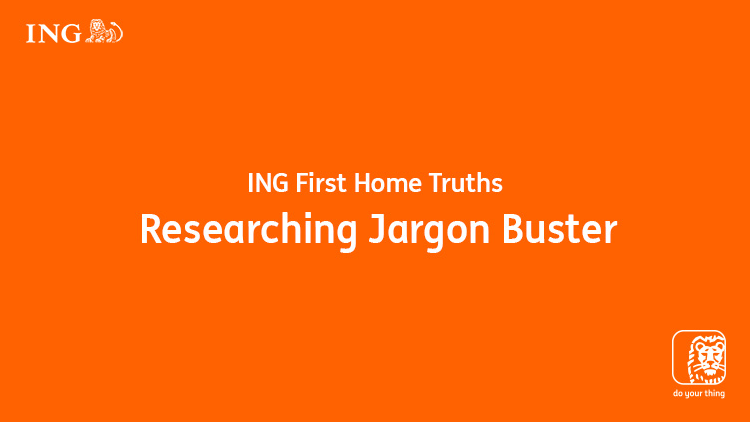How to research home loans like a pro.

Just as you’d swipe and scroll the web for the perfect new pair of shoes for a night out, it’s in your best interest to do your homework when it comes to home loans, too. After all, you’ll want a lender that suits your lifestyle – and the best way to find the right fit for you is by asking a few key questions.
First, get your head around loan types
When you’re researching lenders, it can help to narrow down what type of home loan will meet your exact personal needs – for example, you might want to compare variable interest loans if you like the idea of not being locked in to a particular home loan product or interest rate. Or maybe a fixed rate is your thing so you know exactly what your repayments will be. You can even get a loan with a combo of the two (called a split loan) for added flexibility. Loan types are not one size fits all and are designed to meet your individual finance goals. So, spend some time reading up on all of the options available and speak to your lender to help answer any questions you might have
Then, ask your lender anything (and everything)
Once you’ve got an idea of what type of loan suits you, it’s time to jump on the phone and ask potential lenders some pointed questions. Gathering all the information you can will help you decide on a home loan – so get your notepad out and fire away.
What is your interest rate and comparison rate?
Interest rates are key when looking at any loan and you should compare the loan’s interest rate and its comparison rate. How is a comparison rate different? Well, a comparison rate helps you work out a closer estimate of the total cost of a particular loan per year. It includes the interest rate and most fees and charges relating to a loan, reduced to a single percentage figure. It does not include government fees and charges and charges that are only charged in certain circumstances (e.g. if you pay off the loan early).
While the comparison rate goes close to showing the true cost of a loan, it still doesn’t quite paint the complete picture. You’ll need to ask your lender about the loan’s features, such as terms and repayment frequency (more on this later).
What are your fees?
The cost of (most) loan fees is included in the comparison rate. But it’s still a good idea to get all of the possible fees down on paper so you know what’s ahead and can budget properly. Different lenders may call these fees different things, but they’ll know what you’re talking about when you ask about the cost of:
- lenders mortgage insurance (LMI) – a one-off fee (or can be paid in instalments if your lender offers the option) that most lenders charge if your deposit is less than 20% of the value of the property (Note: although you pay for LMI, it protects the lender, not you)
- break costs – a fee that may be charged in certain circumstances such as if you exit a fixed-rate home loan before the end of the fixed-rate
- discharge fee – also called the termination fee and may be charged when you pay out your home loan in full
- annual fees – many loans come with ongoing fees, which may be charged every month or year
- establishment fees – some lenders charge an application fee or settlement fee, which may include the legal costs of preparing your home loan documents.
There may be other fees, too. By law, a lender has to tell you about all the expenses linked to a home loan – so ask away.
What extra features do you offer?
Some loans come with extra features that may help you pay off the loan faster or reduce the amount of interest you pay over the life of the loan. These are must-knows, as they can help you come to a final decision.
Ask about things like:
- extra repayments – if you’re in a position to make extra repayments (on top of the minimum repayment amount), this could help you pay off the loan faster
- redraw – if you’ve made extra repayments, this feature lets you, you guessed it, redraw or access those extra repayments if you need the money
- an offset account – this is a transaction account linked to your home loan, and the money in this account reduces the amount of interest payable so you could pay off your loan faster.
There may be extra fees for these features, so make sure you ask about the cost and factor this into your decision, too.
How much can I borrow?
Before you start house hunting, you’ll need to know how much you can borrow. A lender should be able to give you an idea of your borrowing power once you tell them about your financial circumstances like your income, debts, assets and expenses.
How much deposit do I need?
The answer to this one depends on how much you want to borrow and whether you’re prepared to pay LMI. If you’re keen to avoid paying this insurance, lenders like to see at least a 20% deposit (that is, 20% of the value of the property). Or, if you’re happy to wear the cost of LMI, or if you haven’t quite reached 20%, you’ll need to find out from the lender just how low you can go. But remember, the lower the deposit, the higher the cost of LMI.
How long does it take to get a loan?
If you’re getting to the pointy end of the house-hunting process, then you might be keen to know just how quickly you’re going to get your home loan approved. It’s useful to find this out in the early stages too, so you can plan ahead. Some lenders can turn your loan around in weeks, others it could be months.
Do you offer pre-approval?
By going through the pre-approval process, you find out exactly how much you can borrow – which then helps you narrow down your house-hunting options. Ask the lender if they provide formal, written and signed pre-approvals – some lenders offer non-formal versions, which aren’t rock-solid when it’s time to apply for the actual home loan, but they’re good as an indication when you start out. A pre-approval is usually valid for a period of 90 days.
Prepare to answer a few questions yourself
During your chat with a lender, they’ll likely ask a lot of questions back at you, too. So it’s a good idea to have prepared some information about yourself.
Expect to answer questions about:
- your personal life, like partners and kids
- your income
- your debts, including credit card limits
- your monthly expenses (and, yes, this includes things like your Spotify subscription)
- your deposit (and whether you can show that you’ve done the hard yards in saving this yourself).
Get as much of this information as you can ready before you jump on the phone.
Tips to research home loans like a pro
- Get to know the different types of home loans.
- Make a list of all the questions you want to ask a lender – then call them up and ask away.
- Prepare handy answers to the types of questions a lender might ask you in return – such as who you intend to buy with, what your income is and how much you have saved for a deposit.
Any advice in this article does not take into account your objectives, financial situation or needs, and you should consider whether it is appropriate for you. Before making a decision in relation to our home loan products, you should read the Terms and Conditions booklet and Fees and Limits schedule, available at ing.com.au or by calling 133 464. All applications for credit are subject to ING’s credit approval criteria. Fees and charges apply. ING is a business name of ING Bank (Australia) Limited ABN 24 000 893 292, AFSL and Australian Credit Licence 229823.
In relation to our credit products, you should consider our Terms and Conditions booklet, Fees and Limits Schedule, Credit Guide and Key Facts Sheet available at ing.com.au when deciding whether to acquire, or to continue to hold, a credit product.






